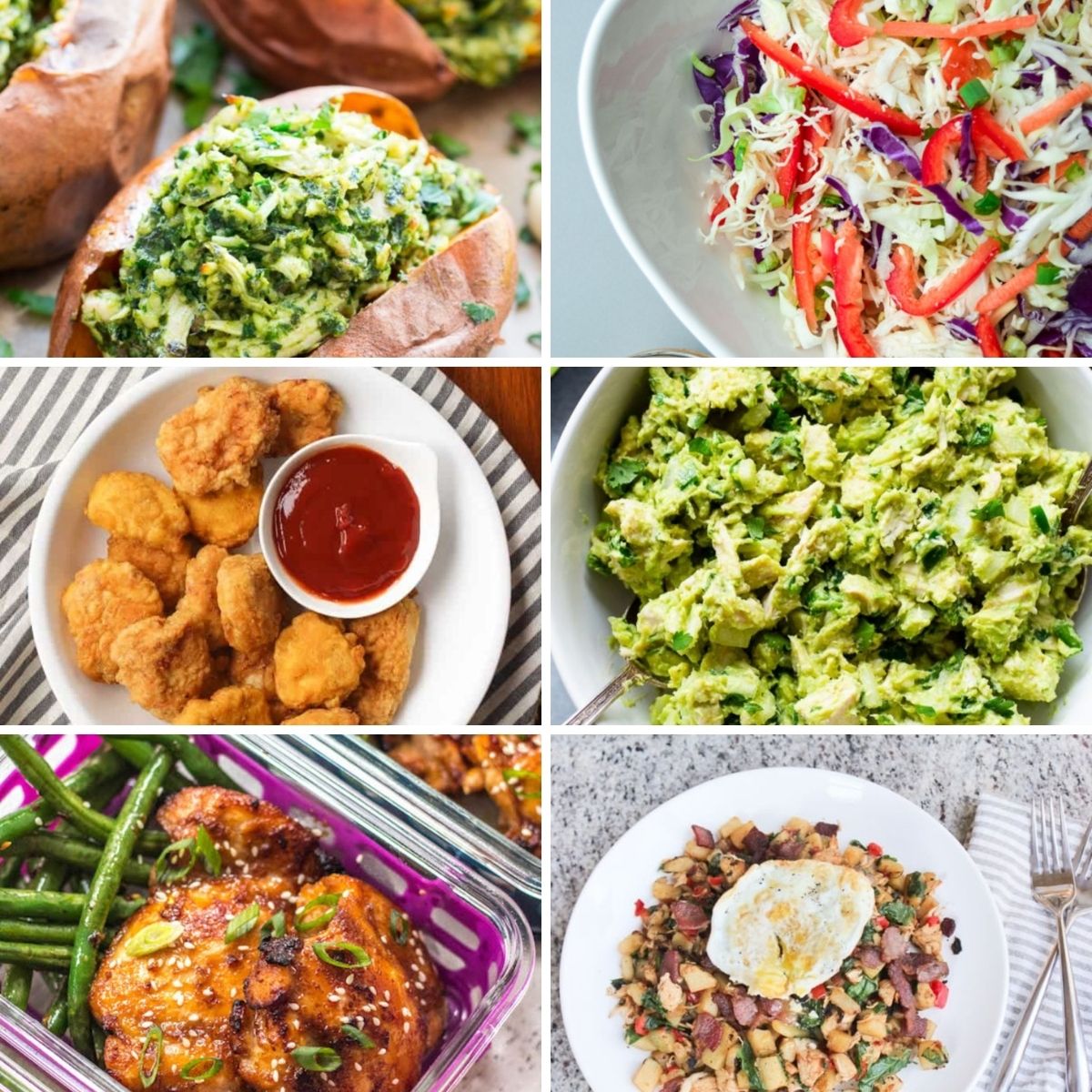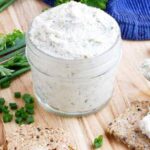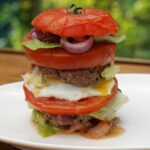Unlock the secrets to effortless weight loss with “The Best Paleo Recipes for Weight Loss Success.” This comprehensive guide dives deep into the world of Paleo cuisine, offering a curated collection of recipes designed to help you shed those extra pounds while nourishing your body with wholesome, natural ingredients. Prepare to embark on a culinary journey filled with vibrant flavors and textures, as we explore high-protein breakfasts that jumpstart your metabolism, satisfying dinners that curb cravings, and healthy snacks and desserts that keep you on track without sacrificing enjoyment. We’ll equip you with practical meal prep strategies, portion control techniques, and solutions to common Paleo diet challenges, ensuring your weight loss journey is both effective and sustainable.
From the sizzling sizzle of perfectly seared salmon to the earthy aroma of roasted root vegetables, each recipe is meticulously crafted to maximize satiety and optimize your body’s natural fat-burning processes. Learn to harness the power of macronutrients to achieve your weight loss goals, understanding how protein, healthy fats, and complex carbohydrates work together to support your metabolism and keep you feeling full and energized throughout the day. We’ll reveal the secrets behind creating delicious, nutrient-rich meals that not only taste amazing but also help you reach your weight loss aspirations.
Recipe Examples

Paleo diets, emphasizing whole, unprocessed foods, can be incredibly effective for weight loss. The key lies in choosing recipes that are both satisfying and support balanced macronutrient intake, preventing hunger and cravings. The following recipes offer a diverse range of flavors and textures, ensuring you don’t feel deprived while achieving your weight loss goals.
Satisfying Paleo Dinner Recipes
These three recipes demonstrate how to create delicious and filling Paleo meals that contribute to sustained weight loss by providing a good balance of protein, healthy fats, and fiber. They are designed to keep you feeling full and energized, minimizing the temptation to snack between meals.
| Steps | Instructions |
|---|---|
| 1. Prepare the Salmon | Season 4 (4-6 oz) salmon fillets with salt, pepper, and paprika. Drizzle with 1 tbsp olive oil. |
| 2. Roast the Asparagus | Toss 1 bunch of asparagus with 1 tbsp olive oil, salt, and pepper. Spread on a baking sheet. |
| 3. Bake | Bake salmon and asparagus at 400°F (200°C) for 12-15 minutes, or until salmon is cooked through and asparagus is tender-crisp. |
| 4. Serve | Serve the salmon and asparagus immediately. A squeeze of lemon juice adds brightness. |
Recipe 1: Pan-Seared Salmon with Roasted Asparagus
This recipe provides a lean protein source (salmon) rich in omega-3 fatty acids, alongside fiber-rich asparagus. The combination promotes satiety and supports healthy metabolism. Imagine the vibrant green asparagus spears, perfectly roasted, contrasting beautifully with the flaky, pink salmon. The aroma alone is enough to make your mouth water.
| Steps | Instructions |
|---|---|
| 1. Prepare the Chicken | Cut 1.5 lbs boneless, skinless chicken thighs into 1-inch cubes. Season with salt, pepper, garlic powder, and onion powder. |
| 2. Sauté Vegetables | Sauté 1 chopped onion, 2 chopped bell peppers (any color), and 1 cup chopped broccoli in 1 tbsp olive oil until softened. |
| 3. Add Chicken | Add chicken to the pan and cook until browned on all sides. |
| 4. Simmer | Stir in 1 (14.5 oz) can of diced tomatoes, 1/2 cup chicken broth, and 1 tsp dried oregano. Simmer for 15-20 minutes, or until chicken is cooked through and sauce has thickened. |
| 5. Serve | Serve hot, optionally garnished with fresh parsley. |
Recipe 2: Chicken and Vegetable Stew
This stew is a hearty and flavorful option, providing a good balance of protein from chicken and fiber from the vegetables. The slow-cooked nature of the stew makes it incredibly tender and satisfying. Picture the rich, savory broth, brimming with tender chicken and colorful vegetables. The aromas are warm and inviting, perfect for a cozy evening meal.
| Steps | Instructions |
|---|---|
| 1. Prepare the Beef | Brown 1 lb ground beef in a large skillet. Drain off any excess fat. |
| 2. Add Vegetables | Add 1 chopped onion, 2 chopped carrots, and 2 cups chopped cauliflower to the skillet. Cook until softened. |
| 3. Make the Sauce | Stir in 1 (14.5 oz) can of diced tomatoes, 1/2 cup beef broth, 1 tbsp tomato paste, 1 tsp dried basil, and salt and pepper to taste. |
| 4. Simmer | Simmer for 15-20 minutes, or until flavors have melded and the sauce has thickened slightly. |
| 5. Serve | Serve hot, topped with a dollop of full-fat coconut milk for extra creaminess. |
Recipe 3: Paleo Beef and Vegetable Skillet
This recipe uses ground beef, providing a good source of protein and iron. The addition of vegetables increases the fiber content, promoting satiety and digestive health. Imagine the rich, earthy flavors of the beef combined with the sweetness of the carrots and the slight bitterness of the cauliflower. The texture is hearty and comforting.
Nutritional Profile Comparison
The three recipes offer varying nutritional profiles. The salmon recipe is higher in omega-3 fatty acids and provides a leaner protein source. The chicken stew provides a good source of protein and various vitamins and minerals from the vegetables. The beef skillet is higher in saturated fat but also offers a good source of iron. All three recipes are relatively low in carbohydrates, minimizing their impact on blood sugar levels. The high protein and fiber content contribute to sustained satiety, preventing blood sugar spikes and crashes. For example, the high protein in the salmon and chicken dishes helps slow down digestion, leading to a more gradual release of glucose into the bloodstream. The fiber in the vegetables further enhances this effect.
Tips for Paleo Meal Prep and Portion Control
Embarking on a Paleo diet for weight loss requires a strategic approach to meal preparation and portion control. Careful planning minimizes the temptation of unhealthy choices and maximizes the effectiveness of your dietary changes. By proactively preparing meals and understanding appropriate serving sizes, you’ll not only achieve your weight loss goals but also cultivate healthier eating habits.
Effective Paleo meal preparation is crucial for weight loss success. Pre-planning your meals prevents impulsive, less-healthy choices, saves time during busy weeks, and ensures you consistently adhere to your dietary guidelines. Careful portioning is equally important to manage calorie intake and achieve a sustainable weight loss journey.
Practical Paleo Meal Preparation Strategies
Implementing these five practical strategies will significantly improve your Paleo meal prep and portion control:
- Sunday Meal Prep: Dedicate a few hours on Sunday to prepare several meals for the week. This could involve cooking large batches of roasted vegetables, grilling chicken or fish, and preparing salads. Imagine a vibrant scene: colorful bell peppers, glistening chicken breasts, and a medley of greens all neatly packed in containers, ready for the week ahead. This significantly reduces mid-week stress and the temptation to order takeout.
- Batch Cooking: Double or triple recipes whenever possible. This allows you to enjoy the same meal for lunch and dinner on different days, minimizing cooking time and effort. Picture a large pot of hearty paleo stew, simmering gently on the stove, its rich aroma filling your kitchen. This stew, enough for several meals, becomes a staple for the week.
- Smart Snacking: Prepare healthy snacks in advance to avoid unhealthy cravings. Think of individual containers filled with almonds, walnuts, or berries – a colorful array of nature’s goodness ready to satisfy hunger pangs between meals. This ensures you always have a healthy, readily available option.
- Freezing for Future Meals: Freeze leftover cooked meats and vegetables in individual portions for quick and easy meals later. Imagine a freezer drawer organized with clearly labeled containers, each holding a perfectly portioned meal, ready to be reheated in minutes. This minimizes food waste and ensures you always have healthy options on hand.
- Utilize Leftovers Creatively: Don’t let leftovers go to waste. Repurpose them into new dishes. For instance, leftover roasted chicken can be added to salads or used to make a delicious chicken and vegetable stir-fry. This creative approach prevents food waste and adds variety to your meals.
Using a Food Scale and Measuring Cups
Accurate portion control is essential for weight loss. Using a food scale and measuring cups helps ensure you consume the appropriate amount of food. This allows for precise tracking of your calorie and macronutrient intake, vital for sustainable weight management. Visualize the precision: a digital food scale displaying the exact weight of your chicken breast, and measuring cups providing accurate volumes for your healthy fats and carbohydrates.
For example, weighing 4 ounces of cooked chicken breast instead of eyeballing a serving ensures consistency. Similarly, using a 1/2 cup measuring cup for your roasted vegetables guarantees accurate portioning. This level of precision empowers you to effectively manage your calorie intake.
Tracking Calorie Intake and Macronutrient Ratios
Tracking your calorie intake and macronutrient ratios (protein, carbohydrates, and fats) is crucial for effective weight management. This provides valuable insights into your daily dietary habits, allowing you to make informed adjustments as needed. Imagine a detailed food journal, meticulously recording each meal and its nutritional composition – a visual representation of your dietary journey. This data-driven approach helps you fine-tune your Paleo diet for optimal results.
Many apps and websites can help you track your intake. By inputting your meals and their ingredients, you’ll receive a comprehensive breakdown of your daily calorie and macronutrient consumption. This empowers you to adjust your diet to meet your individual weight loss goals and maintain a healthy balance.
The ideal macronutrient ratio varies depending on individual factors and goals, but a common recommendation is a balance of protein, healthy fats, and low-glycemic carbohydrates.
Transforming your relationship with food and achieving sustainable weight loss is within reach. “The Best Paleo Recipes for Weight Loss Success” provides a roadmap to a healthier, happier you, armed with delicious, easy-to-follow recipes and practical strategies. Imagine the feeling of confidence and vitality that comes with reaching your weight loss goals, fueled by nutritious, satisfying meals that you genuinely enjoy. This isn’t just a diet; it’s a lifestyle change supported by a wealth of knowledge and delicious recipes designed to make your journey enjoyable and effective. Embrace the power of Paleo, and discover the vibrant, fulfilling path to a healthier, slimmer you.
Question Bank
Can I still eat fruit on a Paleo diet?
Yes, many fruits are Paleo-friendly, but moderation is key due to their natural sugar content.
How much water should I drink daily on the Paleo diet?
Aim for at least 8 glasses of water per day, more if you’re exercising.
What if I experience headaches on a Paleo diet?
This could be due to withdrawal from caffeine or sugar. Gradually reduce intake and increase water consumption.
Are all nuts and seeds Paleo?
Most nuts and seeds are Paleo, but watch portion sizes due to their calorie density.
Is it okay to have cheat days on the Paleo diet?
While not strictly Paleo, occasional indulgences are manageable if you maintain overall adherence to the principles.


